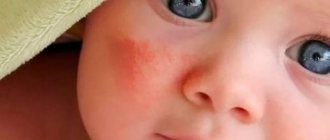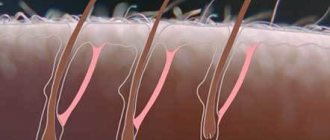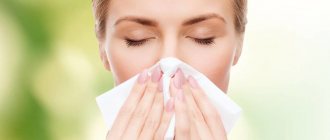An allergy to a child's bottom is one of the most common problems faced by young mothers. Today, allergists note an unprecedented increase in allergy-related diseases. In their opinion, this trend is accompanied by a gradual weakening of the immune system, which is explained by a drop in antigen load.
Most often, allergies are observed in children. An allergic reaction can occur on various areas of the skin, including on the child’s bottom.
Causes of allergies
The main factor predisposing to an allergy to a child’s bottom or perineal dermatitis is increased skin moisture due to wet diapers. Other factors include:
- Mother's milk, formula, baby food products - complementary foods.
- Prickly heat.
- Autoimmune disorders.
- Predisposition to neurodermatitis.
- Predisposition to seborrheic dermatitis.
- Candidiasis.
- The use of diapers made from rough materials.
- Detergent residues on diapers,
- Using plastic panties over diapers.
- Frequent washing with soap.
- Excessive powdering of the skin with powder.
Type of allergy - diaper rash
Diaper rash is a type of simple contact dermatitis. They are localized at the point of contact of the skin with the diaper; the skin folds are not affected. If the rash spreads beyond the area of skin contact with the diaper, seborrheic dermatitis or diffuse neurodermatitis should be suspected.
Diaper rash is most likely caused by the action of proteases and lipases contained in feces on the skin, and not ammonia, as previously thought, so the risk of diaper rash increases with diarrhea.
Diaper rash is characterized by redness and peeling of the skin; in severe cases, blisters and erosions appear. To prevent diaper rash, you should use disposable diapers that absorb moisture well.

A child has pimples on his butt - reasons
There are many factors that can lead to the appearance of rashes on children's skin. First of all, it is necessary to pay attention to the nature of the rash, the degree of damage and the age of the child.
In newborns
- One of the causes of pimples in newborns is diaper dermatitis. This disease is an inflammation of the skin in the buttock area. The cause of the development of dermatitis is considered to be poor hygiene and prolonged exposure to dirty diapers. Ammonia contained in mole and feces irritates the baby's delicate skin, which leads to rashes.
- A common cause of acne is an allergic reaction to care products (wipes, soap, diapers). In order to avoid allergies, it is advisable to choose products without fragrances and intended for children.
- Pimples around the anus may indicate a food allergy. Therefore, you should reconsider your diet.
- Staph infection is also a cause of the rash. It can appear not only on the child’s buttocks, but also on other mucous membranes.
- Another reason is climate. The rash often appears due to inappropriate temperature in the room where the child is. If your baby sweats, rashes can appear on any part of the body.
Allergy symptoms
Signs of allergies on the buttocks in children manifest themselves differently; reddish rashes appear in the form of pimples, vesicles, or sometimes they can merge. These rashes can sometimes be painful and cause discomfort in the baby.
In many cases, they can cause itching and cause anxiety for the baby during sleep. Children during this condition cry, do not take the breast and their sleep is disturbed. If treatment is not started in time, the baby’s condition may worsen every day and the following symptoms may appear:
- Severe redness of the skin.
- The skin is peeling.
- Body temperature rises.
- Pimples can fester.
If your child develops these symptoms, you should immediately consult a doctor and begin treatment immediately.
Causes and treatment of itching in the anus in children
Itching of the butt often bothers young children. It is quite difficult to independently determine the factor causing discomfort and unpleasant sensations. To do this, it is better to consult a doctor, he will make an accurate diagnosis and prescribe a suitable treatment method.
Worm infestations
The most common cause of itching in the anus is worms. Pinworms can be contracted through animals, soil, or by eating unprocessed food. Also, failure to comply with personal hygiene rules contributes to the appearance of worms. These parasites live in the intestines, but in the evening and at night they come out. Pinworms irritate the skin of the anus, causing severe itching, burning and redness. The presence of helminths in a child’s intestines provokes the following symptoms:
- Sleep disturbance.
- Sudden weight loss and loss of appetite.
- Pain in the abdominal area. The baby may also experience frequent bloating and rumbling.
- Worms feed on the child's blood, as it contains vitamin B12. Parasites damage the intestinal mucosa. All this leads to the development of anemia.
- Decreased activity.
- The infected person may experience either constipation or diarrhea.
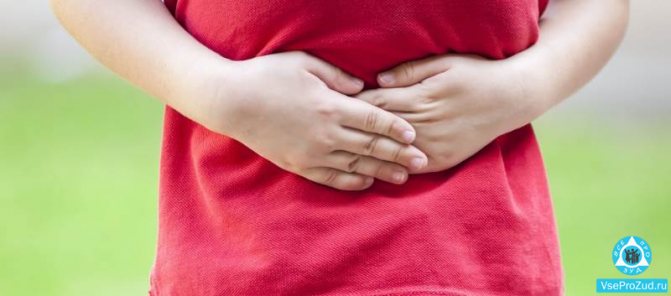
The eggs of these parasites spread very quickly throughout the child’s body. They can also remain on bedding and underwear, on toys, furniture and items of clothing. To prevent infection of the entire family, it is recommended to begin treatment immediately.
In order to make an accurate diagnosis, the child must have stool tested. Only after this the doctor will prescribe a suitable drug.
Therapy is carried out in several stages. First, a sick child should take vegetable oils (linseed, olive, pumpkin, sesame, etc.) or enterosorbents (Polysorb, Enterosgel).
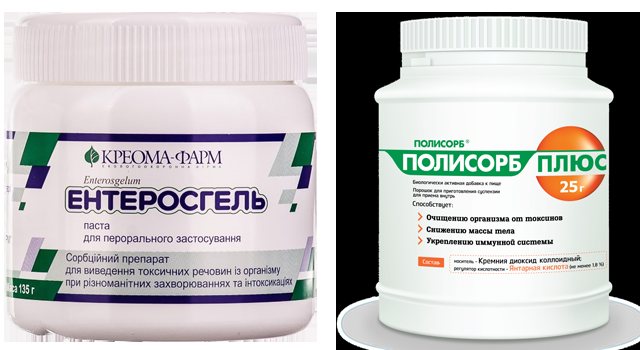
They remove toxins from the body that appeared there as a result of the activity of helminths. Then the child is prescribed antiparasitic drugs to help combat the source of the itching sensation. These include:
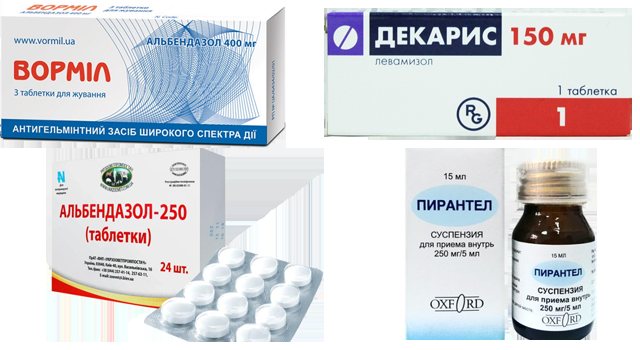
- Wormil tablets.
- "Albendazole".
- "Dekaris."
- Suspension "Pyrantel".
Most medications kill only adult worms, but do not affect their larvae. Therefore, it is advisable to repeat the course of therapy after two weeks. You can also use an enema as an additional treatment method. The solution is prepared from a teaspoon of baking soda and a glass of warm water. Washing is done before and after taking antiparasitic drugs.
Bacterial infection
Quite often, a child scratches his butt due to infection of the body (staphylococci or streptococci). Severe itching is accompanied by small purulent formations on the skin. It is recommended to consult a doctor as soon as possible, otherwise the infection will spread to other parts of the body. Then the treatment will take much longer.
Therapy is carried out only after a thorough medical examination. To eliminate unpleasant symptoms, antibacterial agents are prescribed.
Diaper rash
If a child's (newborn) butt itches, the reason is often diaper rash. Redness and slight swelling appear on the skin. Typically, unpleasant symptoms occur due to infrequent diaper changes, wearing synthetic underwear, and wrapping the child tightly. With diaper rash, the skin becomes red and very itchy. This can cause insomnia and irritability in the baby. To combat diaper rash, use zinc ointment, Panthenol, Bepanten, and cream with chamomile extract also helps.
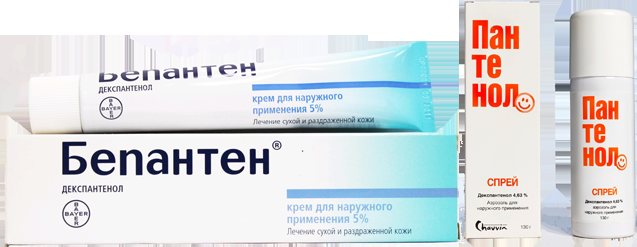
To prevent itching of the butt, it is recommended to follow these preventive measures:
- change your baby's diapers regularly;
- young children should wear clothes made from natural materials;
- when swaddling, use baby powder and special wipes;
- Once a week, add chamomile infusion to your bath.
Allergic reaction
Allergies often cause itching in the anus. Children's skin is more susceptible to various irritants. This is why unpleasant symptoms often occur in a child after contact with animals, clothing, and poisonous plants. Itching can also occur due to certain foods, detergents and washing powders. During allergies, the child becomes less active and constantly itches. Hives, eczema, or contact dermatitis appear on his skin.
Antihistamines are used to eliminate unpleasant symptoms. Additional treatment: rubbing the skin with menthol oil and adding a decoction of the string to the bath.
Fungal infection
Sometimes itching in the anus in a child occurs as a result of infection of the body with Candida fungi. Infection occurs for the following reasons:
- irregular washing;
- presence of anal fissures;
- poor nutrition;
- reduced immunity;
- the presence of helminths in the intestines.
The symptoms of this disease are similar to proctitis. After going to the toilet, the child experiences pain, discharge (blood, mucus), and the anus swells. Treatment of fungal infections is carried out only after taking and analyzing a smear. The drug and its dosage are prescribed by the doctor. Antifungal ointments are used for therapy (Nystatin, Diflucan, Clotrimazole, etc.).

Dysbacteriosis
If a child’s anus is very itchy, the cause may be intestinal dysbiosis. Factors influencing its development:
- stress, tense environment at home, at school, emotional shock;
- eating unhealthy foods;
- cold;
- long-term use of antibiotics;
- frequent trips to the toilet (with diarrhea) or due to constipation.
A sick child may complain of abdominal pain, bloating, nausea, or problems with bowel movements.
What to do in this case? Treatment of this disease is carried out only after passing stool tests. Based on the results, the doctor prescribes medications that help normalize the number of beneficial microorganisms in the intestines. Usually, if a child’s bottom itches due to dysbiosis, he is prescribed Probifor or Linex.
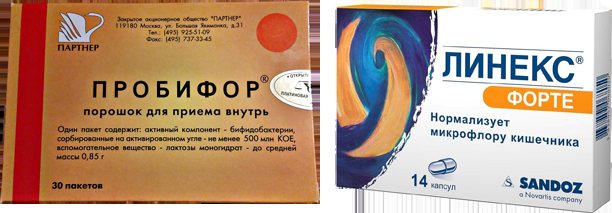
Rectal diseases
Such diseases are rare in children, but they all cause severe itching of the anus:
- Cracks . The cause of the disease may be poor nutrition. Insufficient fiber intake and excess sweets cause constipation. They, in turn, provoke the appearance of anal fissures.
- Haemorrhoids . A distinctive feature of the disease is the discharge of blood from the anus. Frequent constipation, diarrhea and a sedentary lifestyle can cause hemorrhoids. Symptoms of the disease: itching in the anus, irritation of the skin of the anus, bleeding (sometimes it is present in the stool), pain.
Therapy is carried out only after examination by a proctologist. Self-medication will only harm the child.
Allergy treatment
To successfully treat an allergy to the butt in a baby, you first need to establish the cause of the allergic reaction and immediately prevent the baby from coming into contact with the allergen. It is necessary to adhere to the following rules during treatment:
- If the allergy is caused by food, you need to stop eating foods that caused the allergic reaction, for example, chocolate, nuts, honey, eggs, seafood in a mother who is breastfeeding.
- If the allergy is associated with the use of washing powder, then you need to change the powder to a hypoallergenic one.
- If a child is allergic to plant pollen, then you should, as far as possible, try to keep the child away from plants while they are blooming.
To prevent itching, inflammation and discomfort, various ointments and medications are used, they are as follows:
- You can make baths with decoctions of different plants, such as chamomile, thyme and celandine.
- You can lubricate the surface of the lesion with antiseptics such as Miramistin, hydrogen peroxide, chlorhexidine.
- Keep the affected part dry at all times and try to use diapers less often.
- You can lubricate the rashes with regular brilliant green or fuchsin.
- If the rashes fester, it is recommended to treat them with antibiotics.
- Ointments such as Bepanten, D-panthenol and other ointments that do not contain hormonal agents help very well.
- If all of the above remedies do not help, then the doctor is forced to prescribe hormonal medications, which include medications such as hydrocortisone ointment, Sinaflan or prednisolone.
- Antihistamines such as Fenkarol, Suprastin, Fenistil or Zyrtec are also prescribed.
- To remove harmful toxins from the child’s body, Smecta, Enterosgel and other enterosorbents are prescribed.
Diagnostics
At the first manifestations of hives, it is important to immediately consult a doctor to determine the exact cause. You will need to consult the following specialists: pediatrician, dermatologist, allergist, infectious disease specialist. They will help exclude or confirm skin and infectious problems. The pediatrician will conduct an examination and refer you for additional tests. An allergist will identify possible allergens.
During diagnosis, it is necessary to exclude all suspected allergens in order to protect the baby until treatment begins. Parents are advised to keep a food diary. It is necessary to record all the food consumed by the baby, medications and reactions to them. This often makes it possible to identify the source of food and drug allergies.
An elimination diet is also prescribed, which involves eliminating the food component that is believed to cause a negative response. It will have to be followed for several months. It is also necessary to eliminate all potential allergens - animals, diapers, household chemicals, cosmetics, etc.
Laboratory diagnosis involves blood tests.
For infants, this is the safest procedure, since there is no direct contact with the provoking source. Blood tests
| Analysis | What does it show |
| General blood analysis | An increase in basophils and eosinophils indicates the presence of an allergic factor |
| Determination of total Ig E | Going beyond the norm indicates a possible allergic reaction. For reliability of results, it is carried out only from 6 months of age |
| Detection of specific Ig E | Determines the causal source, detection of specific Ig E occurs on one or another component that is added to the blood in the laboratory |
Allergy skin tests should not be performed on infants, as this is very dangerous and uninformative. Babies' skin is very sensitive, so allergy tests may result in false positive responses. The areas where tests are carried out are quite small in infants - this does not allow for a full diagnosis. In addition, if a child has suffered anaphylactic shock at least once in his life, such a procedure is prohibited.
The most important factor in the taboo of skin tests for a baby is direct contact with allergens. An unexpected reaction of the body may occur, which will threaten the baby’s life. Allergy tests are allowed from 3-5 years of age.
Prevention
By observing the following preventive measures, you can prevent or reduce the manifestations of allergies on the butt in an infant:
- When caring for an infant, do not use different baby cosmetics, but rather use hypoallergenic detergents and care products.
- If there is a suspicion that it is the diapers that cause an allergy in the child, it is recommended to change the diaper - buy from another manufacturer.
- It is recommended to leave the baby's buttocks open more often, without a diaper.
- There is no need to buy clothes made from synthetic fabrics for your baby; clothes and diapers should be made of cotton.


